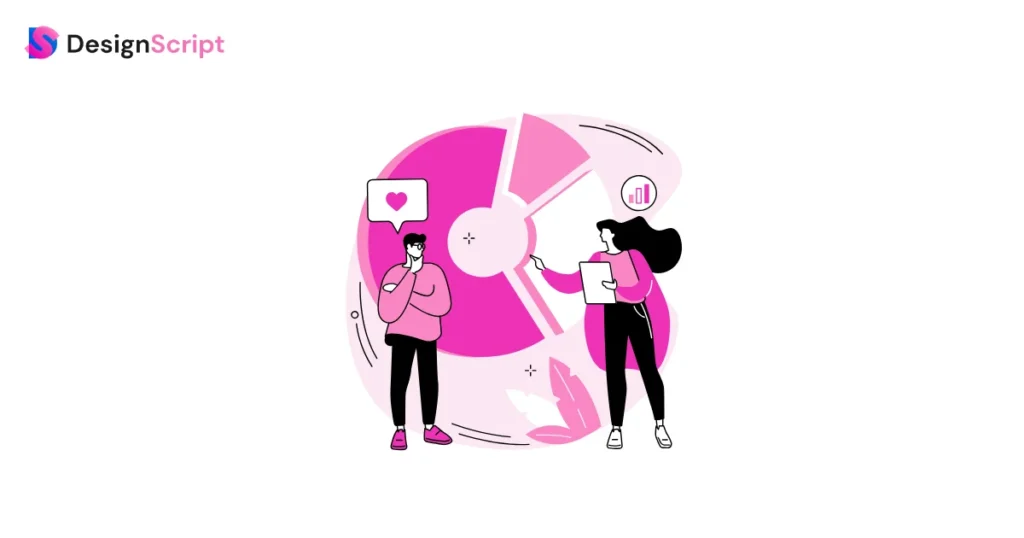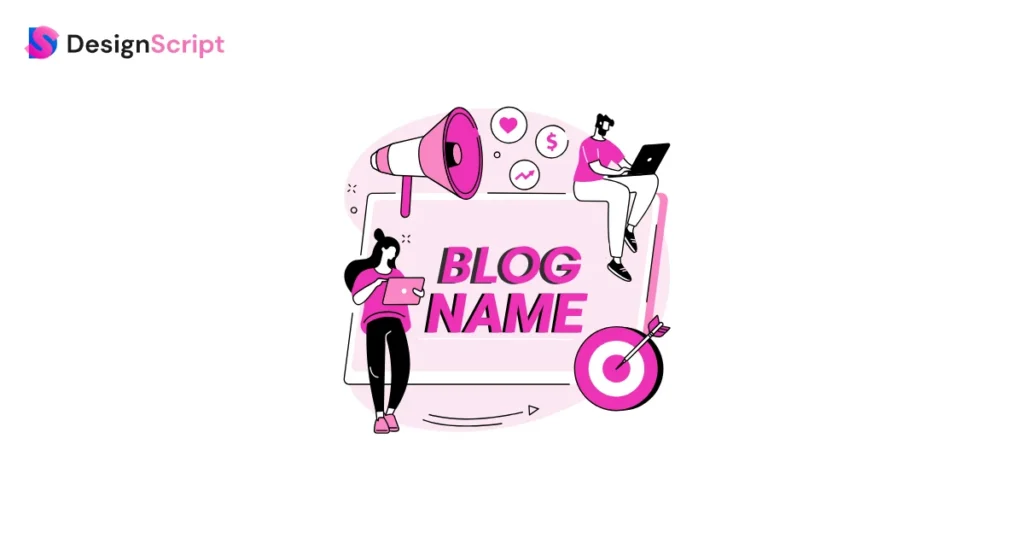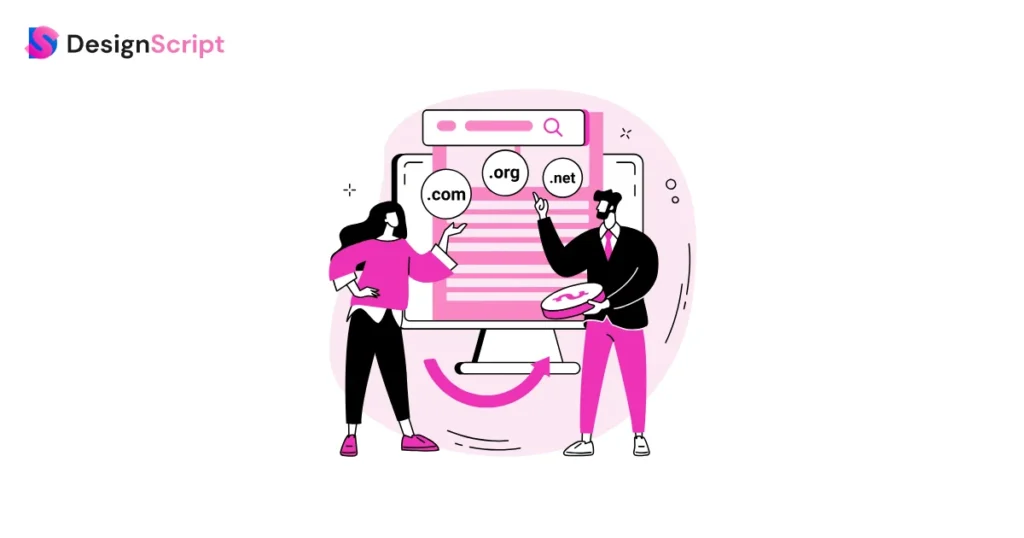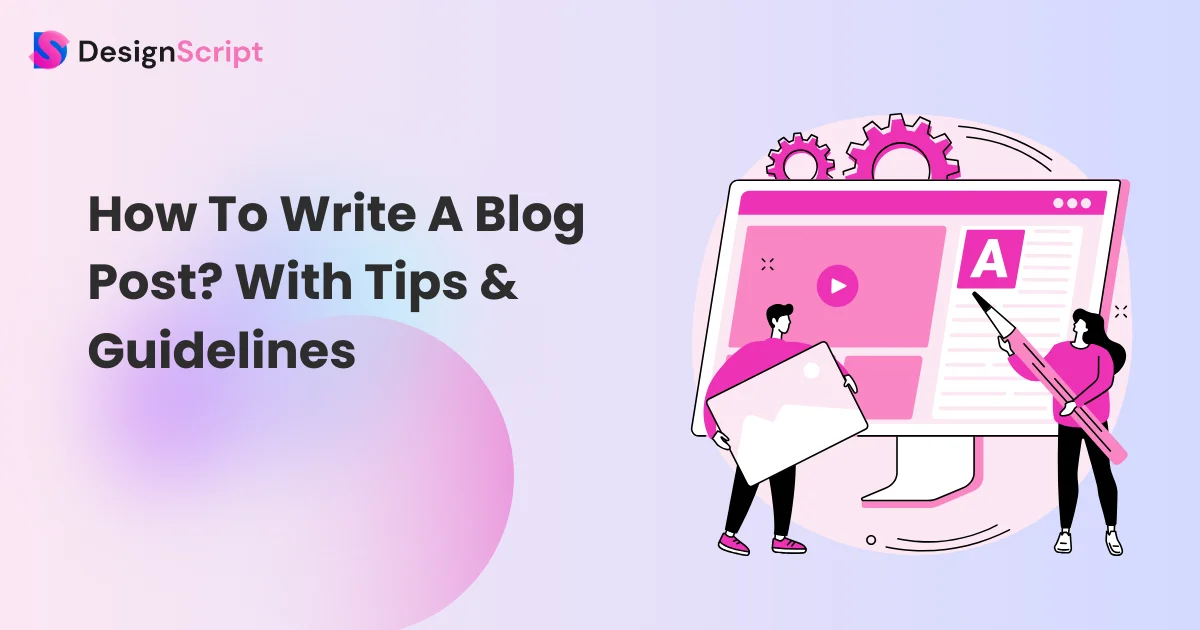How To Write A Blog Post? With Tips & Guidelines
Do you want to know how to write a blog post for your brand? You are in the right place!
Writing a blog is like sharing your thoughts online, similar to chatting with friends, but you have to do it right.
No need to worry if you’re new to this – we’ll keep it super easy. We’ll guide you step by step, from starting your blog to writing great content that people love to read. We’ll even show you excellent tools (called AI writing tools) that help you write like a pro.
Starting a blog is like creating your own space on the internet, and we’ll help you do it right! So, let’s get started and make your blogging successful!
Let’s get started with a journey on how to write a blog post.
Table of Contents
What Is A Blog Post?

A blog post is a short-form piece of content published on a website’s blog. It typically shares information, opinions, or updates on a specific topic and is often written in a more informal, conversational style. Blog posts can cover a wide range of subjects, including personal experiences, how-to guides, industry news, or analysis. They serve to engage and inform the audience, encouraging interaction through comments or social media.
People write blog posts to share their thoughts and ideas or teach others about concepts. In marketing, share engaging and relevant information that looks alike to your target audience, creating a connection and establishing your brand as an authority in the field.
You can use blog posts to showcase your expertise, address customer concerns, and foster a community around your products or services. This not only adds value but also strengthens your brand presence, making your marketing efforts more relatable and impactful. To start a blog, you need a platform like WordPress and web hosting to make your blog visible to others.
You can use social media to share your blog posts and connect with more people. Some folks even make money from their blogs using excellent tools like AI writing tools. It’s super easy to create a blog and share your thoughts with the world! So, don’t wait – start your blogging adventure today!
How to Start a Blog?
Here’s how to start a blog,
1. Understand your audience

Before diving into blog creation, understand your readers. Tailoring content to their needs is key. Whether you’re pondering how to start a blog or aiming for successful posts, grasp their preferences. What topics engage them? What tone resonates? Consider their demographic and interests; this shapes your content strategy.
Understanding the blog vs article dynamic is crucial. Blogs often offer a more conversational tone, while articles maintain a formal touch. Striking the right balance is essential. Additionally, grasp the structure-a captivating introduction, an engaging body, and a conclusive wrap-up make a great blog post. Explore blog post examples for beginners to learn different styles and structures.
2. Check out competitors

Explore competitor blogs to gain insights and inspiration for your writing journey. By going through similar blogs, you can grasp effective techniques and ideas. Analyze competitive blog content strategy, topics, and post structures. Consider WordPress blog layouts, web hosting choices, and AI writing tools they might use. Understand the format of a blog and how blog posts are written. Differentiate between personal blogs and business blog writing. Learn about blog vs article approaches, the right perspective on Blogspot, and how to start a blog for free. By examining blog examples for beginners, you can shape your great blog. Use this knowledge to create compelling content, refine your blog post structure, and establish a strong blog website. Gathering insights from competitors is a key step in crafting a successful and engaging blog presence!
3. Determine the topics you’ll cover

Choosing what to write about on your blog is crucial. It sets the tone for your content and determines your audience. Start by brainstorming ideas that resonate with your interests, knowledge, and what your target readers might want. Narrow down these ideas to specific topics that align with your blog’s purpose.
For instance, if you’re passionate about travel, consider blog topics on budget travel tips, destination guides, or travel stories. If it’s about business, explore topics on entrepreneurship, marketing strategies, or industry insights. Research trends and keywords related to your chosen topics to ensure they’re relevant and searchable. Aim to offer valuable content that engages your audience and keeps them coming back for more. Determining the topics you cover in your blog is a pivotal step. It establishes the tone of your content and shapes your audience. Begin by brainstorming ideas that match your interests and knowledge, focusing on what your readers might find appealing. Narrow down these ideas to specific topics that match your blog’s purpose!
4. Identify your unique angle

Discovering your unique perspective is key when diving into blog writing. Unveiling this angle sets your blog apart and captivates readers. Begin by exploring your passions, experiences, or expertise that fuel your desire to write. This distinctive viewpoint is your compass, guiding the content you craft.
Consider your audience’s needs and interests. What fresh insights or solutions can you offer? Delve into your chosen niche, exploring its depths to unearth uncharted territories. Unveil your personality through your writing style, bringing in authenticity and relatability into your posts. Crafting a successful blog hinges on presenting familiar topics from an exclusive viewpoint.
5. Decide a name for your blog

Choosing a name for your blog is an exciting step in starting your online journey. Your blog’s name is like its identity, so take some time to brainstorm and find something catchy and memorable. Consider what your blog is about and who your audience is. The name must reflect the content and vibe of your blog.
To decide on a name, think about keywords related to your blog’s topic. For instance, if you’re writing about money matters, words like “finance,” “wealth,” or “savings” could be part of your blog name. Make a list of these words and play around with combinations until you find something unique.
Keep it simple and easy to spell. You want people to remember and easily find your blog online. Avoid using complex terms that might confuse potential readers.
Your blog’s name is like the first impression, so ensure it resonates with your content and leaves a lasting impact. Take your time, get creative, and choose a name that represents your blog’s essence!
6. Create your blog domain

Creating your blog starts with securing a domain, which is like your digital address. It’s where people find and visit your blog. To begin, brainstorm and select a unique name that reflects your blog’s essence. Check if your chosen name is available as a domain. Websites like WordPress and others offer domain registration and web hosting services. Once you’ve picked a name and confirmed its availability, register it.
Choosing the right domain is crucial; it’s like naming your blog. Ensure it’s memorable, easy to spell, and relevant to your content. If you’re into travel, words like wander, roam, or adventure might fit in. For finance, words like moneywise, finance folio, or wealthwave could work.
Remember, simplicity is key. Avoid using complex words or lengthy phrases. Your domain should be catchy, clear, and reflective of your blog’s theme. A strong domain sets the stage for your blog’s identity and helps visitors remember and revisit your content. Take your time, brainstorm, and find the perfect domain that represents your blog’s personality!
7. Choose a CMS and set up your blog

Selecting a platform to host your blog is key. You can begin by considering WordPress, a widely used and user-friendly CMS (Content Management System). Setting up your blog involves choosing a suitable hosting service that provides the online space for your content. WordPress offers flexibility and various customizable options to suit your preferences. Once you’ve picked a CMS and hosting, the setup process usually involves straightforward steps guided by the platform. This includes naming your blog, selecting a theme that matches your style, and customizing it to reflect your brand or personality.
Starting a blog is more than just writing; it’s about establishing your online presence. WordPress simplifies this process, making it accessible for beginners and experienced bloggers alike. It’s an excellent platform to begin your blogging journey, offering tools for crafting engaging content and managing your blog effectively. With the right CMS and hosting, you can kickstart your blog confidently and focus on creating compelling posts that resonate with your audience.
8. Customize the look of your blog

Once you’ve mastered the basics of crafting compelling blog content, it’s time to give your platform its unique identity. Customizing the appearance of your blog is like adding a personal touch to a space you’ve just moved into.
Begin with choosing a theme that resonates with your blog’s essence. Themes determine the overall layout, colors, and fonts, setting the visual tone for your content. Experiment with various options until you find the one that aligns with your style and message.
Next, consider the layout. Organize your content in a way that’s easy to navigate. Use headers, subheadings, and bullet points to break down information for clarity.
Remember images and multimedia! They bring life to your blog posts. Ensure they’re relevant and high-quality, complementing your written content.
Lastly, test your blog’s appearance across devices. A responsive design ensures that your blog’s visibility looks great whether viewed on a laptop, tablet, or smartphone.
8. Write your first blog post

Crafting your first blog post marks the exciting beginning of your blogging journey. Think of it as an opportunity to connect with your audience by sharing something special. Just like telling a captivating story, your blog post should be engaging and relatable. Don’t worry if you’re new to this – starting a blog is simpler than you think. With your creative ideas and easy-to-use tools, your first blog post will come together effortlessly. Get ready to type away and begin this journey of sharing your thoughts and experiences with the world!
Writing Your First Blog Post
So, you’re all set to know how to write a blog post? It’s more manageable than it sounds. Here’s a step-by-step guide to help you create a fantastic blog post that people will love to read.
1. Choose a topic you’re passionate about

Passionate about a particular subject? Learn how to channel that enthusiasm into a captivating blog with these steps on how to write a blog. First off, pick a topic that truly ignites your interest. This is key! Whether it’s cooking, travel, or technology, your passion will fuel your writing and engage your audience.
Starting a blog doesn’t have to be complicated. Begin by exploring different blogging platforms like WordPress. These user-friendly tools make creating and hosting your blog a breeze. Once you’ve chosen your platform, structure your posts effectively. From the title to the conclusion, maintain a clear flow to keep readers hooked.
Moreover, consider the content strategy. Brainstorm ideas for blog posts and ensure they align with your chosen topic. To create impactful content, delve into AI writing tools that assist in crafting compelling articles.
Remember, a successful blog isn’t just about writing; it’s also about sharing. Use social media to promote your blog and connect with a wider audience. With dedication and creativity, you can transform your passion into a fantastic blog that resonates with others.
2. Target a low-volume keyword

By doing this, your blog post can stand out among less competition, making it easier for readers to discover. When you aim for a low-volume keyword, you’re aiming for a specific niche or topic that might have fewer articles or blogs written about it.
This strategy can benefit both you and your audience. For you, it means a better chance of ranking higher in search results. For your readers, it offers fresh, unique content on a subject that might need to be more widely covered. To find such keywords, consider using tools that help identify less popular yet relevant terms related to your blog’s theme.
In summary, targeting a low-volume keyword means aiming for less commonly used phrases or words in your blog post. It’s a smart way to attract an audience by catering to specific interests while standing out in search results
3. Google to understand your audience’s search intent
Consider Google as your knowledgeable companion in the world of marketing. When you’re crafting content on effective marketing strategies, simply input your query into Google. It’s similar to consulting a trusted friend for advice. Google reveals popular inquiries and trends related to marketing, allowing you to tap into the collective curiosity of your audience. Consulting Google allows you to understand what captures the interest of your audience, aiding you in creating content that addresses their specific inquiries and needs.
4. Find questions and terms related to your topic
Approach content creation with the curiosity of a child discovering the world! Treat your topic as a valuable find in a treasure hunt, seeking out intriguing aspects. Ask questions that reflect what your audience would want to know, similar to asking a friend about their favorite game. These questions become your treasure maps, guiding you to craft compelling blog posts. Just as people enjoy hearing about topics that pique their curiosity, answering these questions in your blog is like unveiling a treasure for everyone to enjoy. Maintain simplicity and add a touch of fun to keep your readers eager to delve into your blog.
5. Come up with a working title
A blog’s success often hinges on its title. This section focuses on devising captivating titles that draw readers in. A working title acts as the blog’s initial impression, enticing visitors to delve deeper. It’s a snapshot of the content’s essence, hinting at what awaits within the article. Crafting such titles involves a blend of creativity and precision. The goal is to encapsulate the main theme or benefit, arousing curiosity without revealing too much. Effective titles align with the blog’s purpose, enticing the target audience while remaining concise and clear. They serve as a doorway, inviting readers to explore further. This section explores techniques for generating titles that resonate, spark interest, and encourage readership. It delves into the art of balancing intrigue and informativeness, ensuring that the title acts as a teaser to the blog’s content. Understanding the role of a title in blog writing aids in creating impactful and compelling headlines that enhance the overall appeal of the content.
6. Create an outline
An outline for a blog post typically includes several key sections:
Introduction: This sets the stage for your blog post, introducing the topic and grabbing the reader’s attention. It provides a brief overview of what the post will cover.
Main Body: This section comprises the bulk of your content and can be divided into subheadings or sections to organize your points logically. Each subsection should focus on a specific aspect or idea related to the main topic.
Key Points or Arguments: Within the main body, highlight the main arguments, ideas, or points you want to discuss. Use clear and concise language to explain each point.
Supporting Evidence or Examples: Back up your key points with relevant evidence, statistics, or examples. This helps to strengthen your arguments and makes your content more credible.
Conclusion: Sum up the main points discussed in the blog post. Restate the significance of the topic and offer some closing thoughts or suggestions for further exploration.
Call to Action (if applicable): Depending on the purpose of your blog post, you should encourage readers to take a specific action, such as subscribing to a newsletter, commenting, or exploring related content.
Remember, an outline serves as a roadmap for your blog post, ensuring that your content flows logically and covers all essential aspects of the topic.
7. Write an intro
When it comes to blog writing, the introduction holds significant importance. It serves as the gateway to your content by capturing the reader’s attention and setting the tone for what follows. An effective introduction not only informs but also intrigues, making the reader curious to explore further.
In reference to blog post writing, the introduction acts as a guide, outlining the main topic and establishing a connection with the audience. It provides a glimpse of what the blog post contains, often presenting a brief overview or highlighting the main points that will be discussed. A well-crafted introduction frames the context, generating interest and encouraging readers to delve deeper into the article.
The introduction’s primary purpose is to engage the audience from the outset, making them want to continue reading. It lays the groundwork for the rest of the content, steering readers toward the core message or information that the blog post aims to convey. Therefore, in the realm of blog writing, the introduction stands as a crucial element that shapes the reader’s initial impression and sets the stage for a compelling and informative piece.
8. Create each section of your outline
Consider your blog as a series of interconnected chapters. Begin with an introductory section, akin to starting a new journey. Write about easy dessert recipes, using simple language, as if teaching a friend to bake. Maintain clarity and provide valuable insights, much like sharing uncomplicated tips. Address your audience as eager learners and friends. When you are open and friendly on your blog, it becomes a guide to making yummy treats. Readers will savor it, like following a structured guide. Keep it simple, be a helpful mentor, and enjoy sharing your fun adventures with everyone!
9. Publish and promote your first post
Great work! You’ve crafted your blog post into a marketing masterpiece. Now, it’s time to unleash it to the world! Hit that publish button, essentially unveiling your creation to a wide audience. Take it a step further—share it across social platforms, broadcast it on Facebook, and invite your network to engage. The more eyes on your content, the greater the satisfaction, similar to the joy of a well-received marketing initiative. So, spread the news, and let the buzz and excitement unfold!
So, now you know how to write a blog post that grips readers!
What Makes A Good Blog Post?
Here are few suggestions to keep in mind to make a blog post successful:
Embrace A Conversational Tone
- Friendly Approach: Instead of adopting a formal tone, write in a manner that feels like a friendly chat. Use language that’s relatable and easy to understand.
- Engage Readers: Encourage interaction by creating a conversational atmosphere. This makes readers feel involved and more likely to continue reading.
Explore Compelling Topics
- Storytelling Angle: Approach blog topics as if you’re sharing captivating stories with friends. This makes the content more engaging and relatable.
- Wide choice: Write about things you love, like food, games, trips, or any other hobbies.
Enhance Visual Appeal
- Images and Colors: Incorporate visuals like images and use color schemes that complement your content. This enhances the aesthetic appeal of your blog.
- Improved Experience: An attractive blog brings in readers and makes it easy for them to explore your content.
Extend Reach through Social Media
- Social Media Sharing: Utilize platforms like Facebook, Twitter, Instagram, etc., to share your blog posts. This helps expand your audience beyond your blog’s regular readers.
- Connect with Audience: Engaging with readers on social media lets you learn what they like and talk with them.
Offer Valuable Insights
- Address Queries: Go beyond storytelling; address questions or issues your audience might have. This helps establish your expertise in your niche.
- Provide Solutions: Share tips, tricks, or valuable information that adds value to your readers’ lives. This helps in building trust and credibility among your audience.
Use these elements in your blog writing to create content that stands out and connects with your audience in the crowded blogosphere.
Blog Formatting Guidelines
Following are a few blog formatting guidelines you should keep in mind:
1. Include H2s to arrange ideas
H2s, also known as subheadings, play a crucial role in organizing content within a blog post. They act as signposts, guiding readers through the structure and helping them navigate the information more effectively.
H2s break down the text into digestible sections, making the content less intimidating and more readable. By providing clear boundaries between different topics or sections, readers can easily scan for the specific information they seek.
They aid in maintaining a logical flow within the blog post. Each subheading represents a distinct idea or point, ensuring a smooth transition from one concept to another. This helps maintain coherence and ensures the content is cohesive.
Search engines rely on H2s to understand the structure and relevance of the content. Properly optimized subheadings with relevant keywords can improve the post’s visibility and ranking in search results.
2. Center align your images
Center aligning your images holds significance in blog post writing as it enhances visual appeal and readability. This instruction guides authors to position their images at the center of the content, creating a balanced and aesthetically pleasing layout.
Incorporating centered images within a blog post contributes to a better user experience by breaking the monotony of text, allowing readers to pause and engage with visual content. When strategically placed, these images serve as visual aids, reinforcing the text’s message or providing additional context.
Moreover, center-aligned images create a sense of structure and professionalism within the blog post. They help maintain a consistent design and flow, preventing the content from appearing cluttered or disorganized. This formatting choice also adapts well to various screen sizes, ensuring a cohesive presentation across different devices.
Ultimately, center-aligning images is a simple yet impactful technique that contributes to the overall visual appeal and comprehension of a blog post, making it more inviting and accessible to readers.
3. Add alt text
Imagine your marketing buddies needing more visuals. No worries! Just introduce a brief description known as alt text. It’s similar to narrating the image content in simple terms. For instance, if there’s a snapshot of an adorable cat, describe it like, “A fluffy cat playing with a ball.” This ensures that even those unable to view the image comprehend its essence. Alt text is comparable to subtitles in a movie, providing a universal understanding of the narrative. It’s effortlessly effective, guaranteeing everyone relishes your marketing content, regardless of their ability to view images. Keep it straightforward, keep it enjoyable, and keep on marketing!
4. Keep your sentences short
Utilize straightforward language, similar to how you’d explain your favorite product to a younger audience. Keep your sentences short and relatable, creating a connection with your readers. Much like sharing an engaging story, simplicity in your blog content makes it accessible and enjoyable for a wider audience. This approach fosters reader satisfaction and excitement, contributing to the overall success of your efforts. So, maintain that easy-going style, ensuring your audience, much like an eager audience, remains delighted and keen to engage with your blog!
5. Use media
Transform your blog into a vibrant marketing hub! Look at it as a dynamic space filled with engaging visuals and multimedia elements. Incorporate images, videos, and animated gifs that align with your theme. Multimedia content entertains your readers, turning your blog into a captivating virtual realm. Make your marketing space as thrilling as a theme park, inviting exploration and enjoyment. Maintain a playful approach, and relish the journey of creating an exciting and interactive marketing experience!
Blog Editing Tips
After knowing how to write a blog post, here are some easy tips to make your blog sparkle:
1. Avoid Repetition
The significance of avoiding repetition is crucial when crafting a blog post. Redundancy, or repeating information, weakens the quality and impact of your writing. It diminishes the reader’s interest and might convey an impression of limited content or lack of depth. By steering clear of repetition, your blog post gains clarity, becomes more engaging, and maintains a sense of freshness throughout.
Avoiding repetition demands a thoughtful approach to language and structure. It involves varying sentence structures, using synonyms or different expressions for the same concept, and ensuring each paragraph contributes distinct information. Through this, your blog post not only retains reader interest but also enhances the clarity and impact of the conveyed message, making it more effective and memorable.
2. Read Your Post Aloud
The practice of speaking out the written material is a fundamental step in the blogging process.
By voicing the content aloud, writers gain a deeper understanding of its flow, coherence, and overall effectiveness. This approach enables them to identify awkward phrasing, grammatical errors, or inconsistencies that might be overlooked during silent reading.
The “Read Your Post Aloud” instruction serves as a practical technique to refine the written piece, ensuring its clarity and resonance with the intended audience. It facilitates the detection of structural flaws and aids in maintaining a conversational tone, promoting engagement and comprehension.
3. Let Someone Else Read Your Work
This step involves asking someone, like a friend, family member, or colleague, to read through your writing before publishing it. It helps ensure that your message is clear and easy to understand for your audience.
Having someone else read your work offers a fresh perspective. They can point out any parts that might be confusing or unclear. Sometimes, as writers, we can overlook mistakes or assume our point is obvious when it might not be. Another person can provide valuable feedback on the overall flow, structure, and language used in the blog post.
Their insights can improve the quality of your writing by catching errors you might have missed and suggesting changes that enhance readability. This process doesn’t just refine your work; it also makes it more appealing and engaging for your readers.
Ultimately, letting someone else read your blog posts before publishing serves as a valuable quality check, ensuring that your message is effectively shared and resonates well with your audience.
4. Ensure Sentences and Paragraphs are Shorter
In blog post writing, the significance of shorter sentences and paragraphs is crucial. This practice enhances readability and understanding for readers. Short sentences are easier to follow, preventing confusion or loss of focus. They convey information more directly, aiding in clarity and comprehension.
Likewise, breaking content into shorter paragraphs maintains reader engagement. It prevents the text from appearing daunting, making it more inviting to read. Short paragraphs create visual breathing space, allowing readers to digest information more comfortably.
Moreover, in a digital age where attention spans are shorter, concise sentences and paragraphs hold immense value. They cater to a wider audience, including those who skim through content. This format facilitates quicker absorption of key points, ensuring the message isn’t lost amidst lengthy, complex structures.
Ultimately, employing shorter sentences and paragraphs in blog writing isn’t merely about simplicity; it’s about respecting your readers’ time and ensuring that your message is easily and effectively communicated. It’s an essential strategy to engage and retain your audience’s interest in a world filled with diverse content choices.
5. Understand That Your Blog Post Can’t Be Perfect
Acknowledging that perfection isn’t achievable is crucial when crafting blog posts. Looking for perfection often leads to excessive self-criticism and delays in publishing. When writers accept this reality, they can concentrate on creating valuable content instead of striving for impossible perfection.
Blog posts serve to inform, entertain, or engage readers. Accepting imperfections enables writers to prioritize conveying their message effectively. Striving for flawless posts often hampers creativity and authentic expression. Instead, acknowledging limitations encourages continuous improvement.
Recognizing that readers value substance over perfection is pivotal. They seek relevant information, engaging narratives, or solutions to their queries. A blog’s impact lies in its resonance with the audience, not in flawless grammar or impeccable formatting.
Furthermore, understanding the impermanence of blog posts is crucial. Content can evolve, be updated, or amended. We prioritize quality and embrace imperfections to publish on time and encourage interaction, feedback, and community engagement.
6. Don’t Be Afraid to Make Change
It encourages writers to be open-minded towards modifying their content, structure, or perspectives. This approach allows for improvement and growth in the quality and relevance of the blog.
Revisiting and refining one’s work is essential. It encourages a willingness to edit, update, or adjust information based on feedback, new insights, or evolving trends. Making changes is not a sign of weakness but rather a sign of dedication to delivering the best possible content to readers.
In the realm of blog writing, being unafraid to make changes means fostering a dynamic approach. Writers can use it to improve their ideas, connect with their audience, and keep up with digital changes. This approach to change helps the blog evolve, keeping it interesting and helpful for readers.
Let The Blogging Adventure Begin!
You’ve learned how to write a blog post & the magical secrets. It’s like painting a masterpiece full of your favorite colors and fun ideas. Remember, a blog is your place on the internet to share your passions, just like chatting with friends.
Now that you’ve crafted your fantastic blog post, it’s time to share it with the world! Click that publish button like unleashing a burst of confetti at a party. Spread the word to your pals, family, and anyone who loves a good story. Imagine it’s like shouting from the mountaintop about your fantastic adventure.
And don’t stress about being perfect! Your blog is your unique creation, like your favorite toy that reflects your personality. Embrace the fun, be yourself, and keep writing with passion. Remember, every blog post is a new, exciting chapter in your online tale.
FAQs
No, starting a blog doesn’t demand a business. It can be personal or professional, catering to varied interests or niches.
A great blog post typically takes 3-6 hours to craft effectively.
A blog regularly publishes posts, whereas a website encompasses diverse content types and serves broader purposes. Both differ in focus and function. Read on for tips on mastering blog writing!

